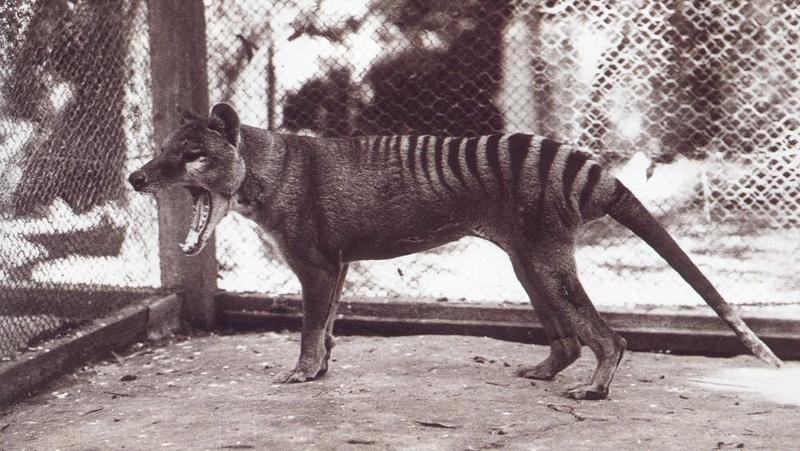The same article mentioned another convergent evolution example that really caught my attention. The article mentioned the American wolf and the Tasmanian wolf, which really caught my attention. The Tasmanian wolf and our American species both developed similar characteristics through convergent evolution. They both developed their characteristics after the breakup of the super-continent Gondwanaland, which separated about 100 million years ago. The American wolf is a mammal and shares similar skull and body build to the Tasmanian wolf. The Tasmanian wolf is a marsupial; it had a pouch so it wasn't exactly like the American kind. They both have similar characteristics but evolved on their own evolutionary path without a recent common ancestor. I enjoyed learning about the Tasmanian wolf but unfortunately they are thought to be extinct and the last one died in captivity.
This is a Tasmanian wolf.
http://www.sciencedaily.com/releases/2011/05/110502110622.htm

No comments:
Post a Comment